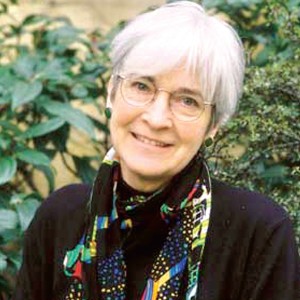In 1960s, Barbara Harriss-White along with her husband John Harriss began an extraordinary journey driving down from Europe to India in an old Ford van to take part in a mountaineering expedition to Kishtwar Himalayas.
The journey changed her life forever and for the next 44 years, Barbara spent visiting Indian small towns to understand the informal capitalist economy and its regulative politics. She chose Arni, a municipality in Tiruvannamalai district, for her life time study.
In an exclusive e-mail interview with S V Krishna Chaitanya from Oxford ahead of the International Women’s Day on March 8, Barbara, who is an Emeritus Fellow, Professor of Development Studies and Senior Research Fellow in Area Studies at Oxford University, took him through her astonishing journey, her love for India, especially Tamil Nadu, which sowed the seeds for her lifelong study that inspired her to pen 35 books, over 225 book chapters and journal papers, almost all on India. Her work in India is now setting a trend for other sociologists across the world to take up similar studies of small towns.
Excerpts from the interview:
Tell us about the experience of driving all the way from Europe to India.
In the 1960s many young people from Europe took the Overland Route in search of exotic India. We had been invited to a mountaineering expedition to Kishtwar Himalayas. Mountaineering had suited my need to escape and learn about extreme environments. We were poor students at Cambridge. My husband John bought an old Ford van, and we set out. The experience was life-changing. Our van passed through Pakistan descending down the Khyber Pass. The Green Revolution was in its infancy in both Punjabs.
Why did you choose the town Arni for your lifelong study?
People ask me why bother to sweat it out in episodes of field research over four decades in a rapidly growing and changing town, Arni, that is obscure to all but those who live there? With a touch of incredulity local businessmen enjoyed the sight of a European woman, tailed in those days by a line of small ragged children, drawing maps of the businesses in town.
It became known locally as ‘professor’s work’. Because of Arni’s multiple societal dynamics and it being at the centre of the Green Revolution on TN’s Coromandel plain, I chose this town. Besides, it was also the closest market town to the village in which my husband John was researching capitalism and peasant farming.
What purpose did such exhaustive study of a small town serve? Whom does it benefit?
Over four decades, this research has explored a rolling agenda of questions about ‘Middle India’, non-metropolitan India’s economic and social development, which cannot be answered in any other way than through sustained or long-term rural and urban field research.
Over the years it has been possible to build an archive of comparative field material on rural markets and the policy processes through which the State intends to control them on the ground: rice in southern India, Sri Lanka, Bangladesh and West Bengal; coarse grains in central India and Francophone West Africa; and lately jhum products in Arunachal. A Chinese sociologist is taking the questions we asked in Arni to market towns in China. If only a young generation of Indian scholars would carry it on into the future!
What are the challenges you faced…did the people accept you to begin with?
To start with, I found Tamil very hard to learn because in the field, talking to businessmen I had no opportunity to practice, make mistakes and learn this beautiful but difficult language. Gradually I came to terms with the fact that I would never be a fluent speaker but I understand the language – territory of my research and work through assistants.
This means I can check and write down the interviews while the conversation is being choreographed. In fact, in juggling all these roles at once, an English interview is quite difficult!
The first wholesaler I ever interviewed, one very long evening in Vellore in 1973, took me through the entire process of paddy and rice marketing and milling and taught me about equipment, technical terms and the tricks of the trade. That was a revelation and a huge gift. Some of the most fascinating details come as digressions in talks about politics, or how local business builds the local economy or visits to meet their families at home.
Is the rural India keeping up with the pace of urban India which is seeing rapid growth?
That’s a question not answerable through field economics. It needs all India statistics, which many feel are not reliable. But we know from India’s fine school of long term village studies started exactly a century ago by Gilbert Slater in what is now Tamil Nadu that the urban industrial economy feeds upon the rural one.
In some regions returns to agriculture are good, even to rice but especially to vegetables, sugar cane and high value crops. But the reasons people are migrating in droves off the land are environmental degradation, the water crisis, the encroachment of common land, the squeeze of costs and prices, the pull of higher wages in the non-farm economy and the constant need to supplement the returns from tiny smallholdings by work other than in agriculture.
Even now, a majority of villagers have agriculture as their primary source of income. So the relative neglect of agriculture by the State is something this cannot support.
source: http://www.newindianexpress.com / The New Indian Express / Home> Cities> Chennai / by Express News Service / March 07th, 2016
